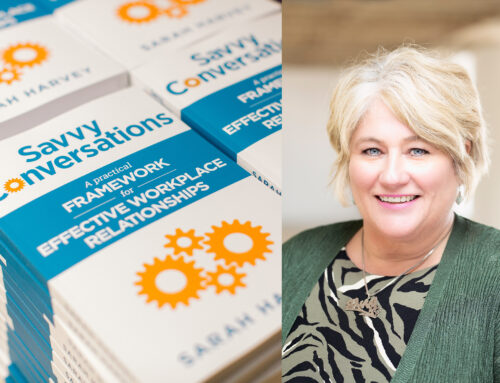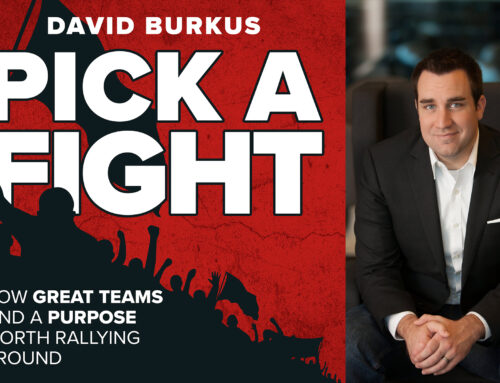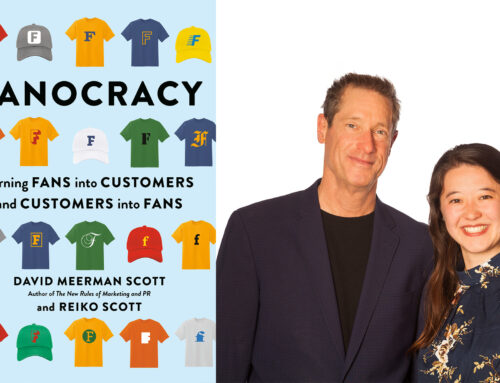Humor is disarming and it is its own reason for being. That means that if you can make the audience laugh as a public speaker you’re a success on that score alone. Occasionally, an audience will complain that a speaker wasn’t serious enough, or that there wasn’t enough meat on the bones of a speech, but those complaints are rare. We live in tough economic times and most business meetings are boring. Make me laugh and I’ll thank you.
Accordingly, all public speakers need to read one of the classics on humor in the theatre, Why is That So Funny, by John Wright. Wright begins by analyzing four kinds of laughter:
• the recognized laugh,
• the visceral laugh,
• the bizarre laugh, and
• the surprise laugh.
The recognized laugh is, simply enough, laughter of recognition. When someone mimics a high status member of the audience, for example, we laugh if the mimicry is close enough that we pick it up right away.
The visceral laugh is the laugh of slapstick, of extremes, of physical humor. When a speaker interacts with an audience member and there’s a pay off in a funny physical effect – like hypnotists making their victims do inappropriate things – you get a visceral laugh.
The bizarre laugh is the Monty Python school of humor – non sequitors, random comments, the yoking of 2 unrelated things together – and it’s the easiest kind of humor to create in speeches and presentations. Use it with care, though; not everyone gets it and it may leave some audience members puzzled and irritated.
Finally the surprise laugh is the laugh of a child at something unexpected. When someone jumps out from behind a curtain, people laugh to express the incongruity of the action. This sort of humor is simple and keeps everyone ‘present’ in the moment. It’s a good way to wake an audience up that has gone to sleep.
Wright’s book is full of games to play and insights into humor of all kinds. The games themselves are excellent ways of upping your public speaking game; like Improv, they will help you develop quick reflexes and confidence to act in the moment with an audience.
A very simple example: Wright describes the “Yes Game.” This game involves talking to yourself as you’re walking across the stage, saying, “Yes, I am comfortable and happy doing this action.” Wright points out that when you engage in that kind of self-talk, your body language follows along, and you become physically more comfortable and happy in the space. That’s a great trick for nervous public speakers to try, and worth the price of the book in itself.
Why Is That So Funny deserves to be read by all public speakers who want to improve their delivery, stage presence, and maybe even be funnier.











It is great to see John’s book in your list Nick. I am totally biased because I have spent so much of my life working alongside John, but I have to say—John Wright’s work is ground-breaking, impactful and most of all fun! If readers ever happen into the UK look out for being able to grab some training at http://www.thewrightschool.co.uk/ It will revolutionize the way you understand and deliver live performance.
Amongst other accolades John was honored by Jacques Lecoq for developing a deeper understanding around techniques for audience contact, most importantly “clocking the audience”—a direct look to an audience that builds rapport on each moment of an action.
The constant shout from John from the back of a rehearsal auditorium of “If the audience laugh… clock them… and do it again!” is the most counter-intuitively brilliant technique that can roll an audience for 20min based on one idea.
If comedy is useful or important to you, then you really have to read this book. John has influenced everything from the bold comedy of modern circus such Cirque du Soleil to the dark and subtle humour of TV sitcoms such as The Office
Mark Bowden
http://www.truthplane.com
Hi, Mark —
Thanks for your insightful comment and remarks about John Wright. The book repays careful study; it is full of insights on delivering comedy — and not incidentally, delivering both serious and funny speeches.
Good point Nick. A better understanding of comedy is a better understanding of how to deliver more dramatic content because it helps you understand the vulnerability needed to excel at both. It is no surprise that Glee’s Jayne Lynch wins the TCA’s individual achievement in comedy award given her subtle and moving performance in episode 8, “Wheels”.